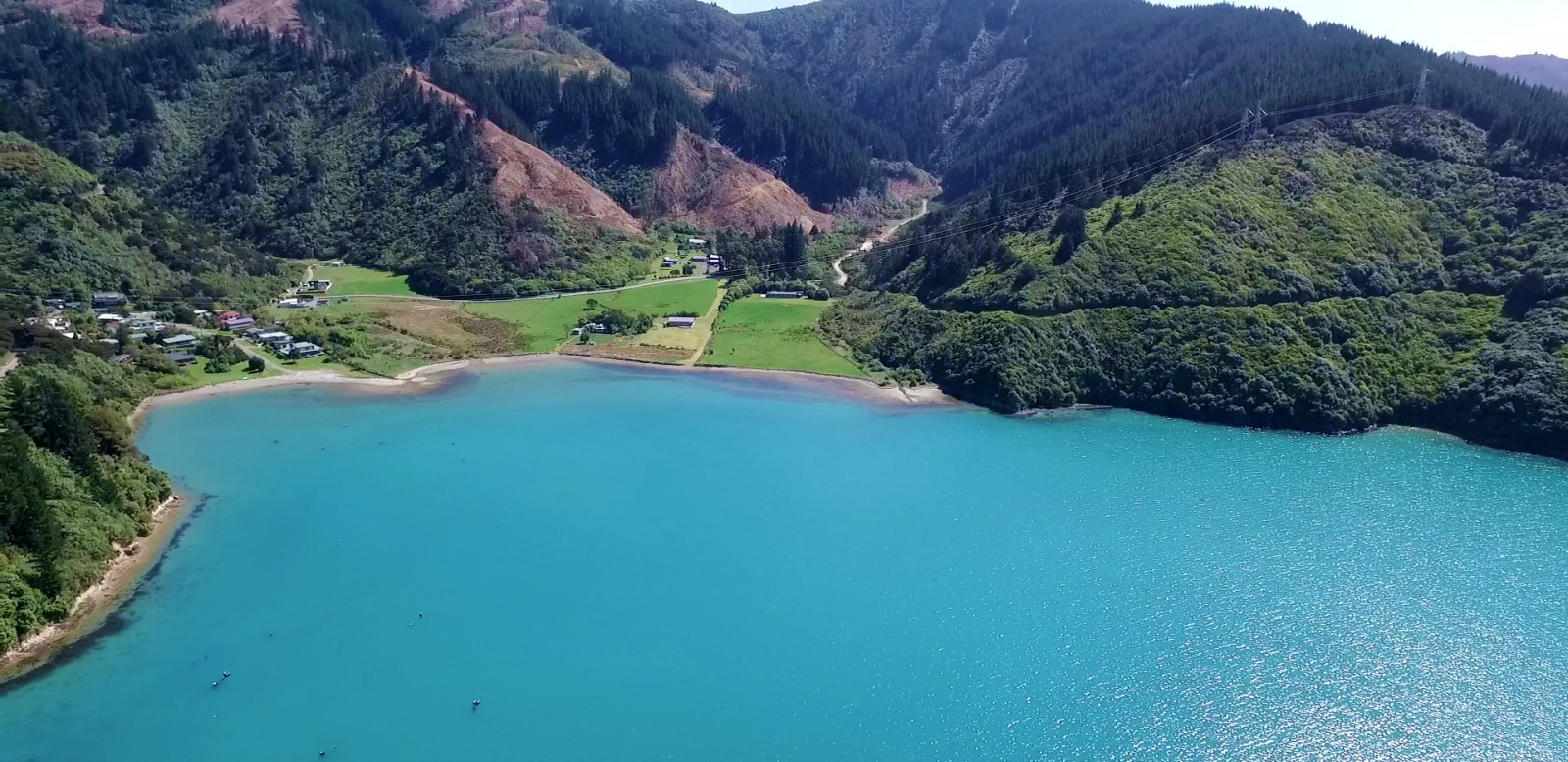The origin of this bay’s name is uncertain.
The bay is said to be named after a local chief and yet, in Māori, hakahaka means squat, short or low lying.1
Does this description refer to the stature of the chief or is it in fact a reference to low lying land in the bay?2
The wider Te Whanganui / Port Underwood area has a long history of occupation by Māori. The iwi (tribe), Rangitāne o Wairau had settlements in the harbour until 1829, when by right of conquest, Ngāti Toa Rangatira became dominant.3
Māori used the area for collecting kai moana or seafood and for trade with whalers and settlers.4
During the 1970s, archaeological evidence of Māori settlement in the bay was discovered in the form of shells and burnt food materials.5
Up until the mid-Twentieth Century, the bay was very isolated, only accessible by boat or a bridal track from Picton. In 1955 when the first road was constructed.
There was a school in the bay from 1912 to 1916 and during the Second World War, American marines practised landing three submarine chasers on the beach.6
A notable couple to live in the bay during the Nineteenth Century were John and Kurapa Davis.
John Davis came to New Zealand from America at the age of 16 on a sealing and whaling ship. He was African American and possibly an ex-slave.7
Kurapa Davis, née Okura, was born on the Rēkohu/ Chatham Islands. She was an adolescent during the period following the 1835 invasion of Rēkohu/ Chatham Islands by two mainland iwi, Ngāti Mutunga and Ngāti Tama.8
In 1842 as a legacy of the invasion and the resulting enslavement of the population, it is said Kurapa, was relocated to the Auckland Islands.
It was here she probably she met John Davis and in 1847 had a daughter with him.
By 1855 the couple had reached New Zealand and moved to Hakahaka Bay. Here they received a land grant, built a house and established gardens and an orchard. The couple were renowned for their hospitality, hosting many visitors to the region. They made a living through fishing and whaling.9
Kurapa died 1884, locally known as Old Poll or Mary Davis, she is buried in an unmarked grave in the bay. John died in 1886. He is buried in Picton Cemetery.10
1. “Hakahaka”, Te Aka Māori Dictionary, accessed, May, 7, 2019, https://maoridictionary.co.nz/search?idiom=&phrase=&proverb=&loan=&histLoanWords=&keywords=hakahaka .
2. James R. Eyles, Place Names of Port Underwood - a post European History, (Picton: October Enterprises, 2002) 8-9, 21.
3. Loreen Brehaut, the Bays of Port Underwood, (Picton: Picton Historical Society, 2012) 5.
4. Marlborough District Council, Nelson City Council and Tasman District Council, “Te Tau Ihu Statutory Acknowledgements 2014”, accessed July 18, 2018, http://www.nelson.govt.nz/assets/Environment/Downloads/TeTauIhu-StatutoryAcknowledgements.pdf .
5. Michael M Trotter, Port Underwood Archaeological Survey, (Christchurch: Canterbury Museum, 1976) 12.
6. Brehaut, ‘Bays of Port Underwood’, 10.
7. E. Mallett, “John and Kurapa Davis”, The Prow, accessed February 5, 2019, http://www.theprow.org.nz/yourstory/john-and-kurapa-davis/#.XFlCn1wzbIX .
8. Rhys Richards, 'Chatham Islands - From first settlement to 1860', Te Ara - the Encyclopedia of New Zealand, accessed May 7, 2019, https://teara.govt.nz/en/chatham-islands/page-3 .
9. Mallett, “John and Kurapa Davis”.
10. Eyles, ‘Place Names of Port Underwood’ 22.



